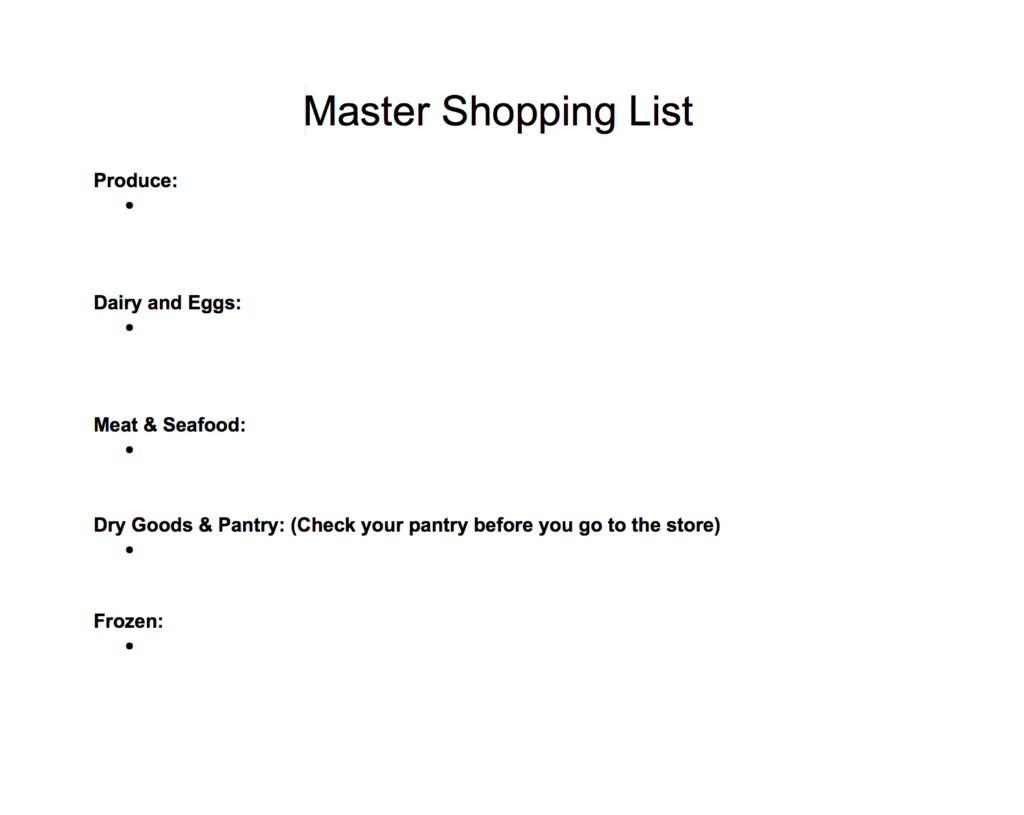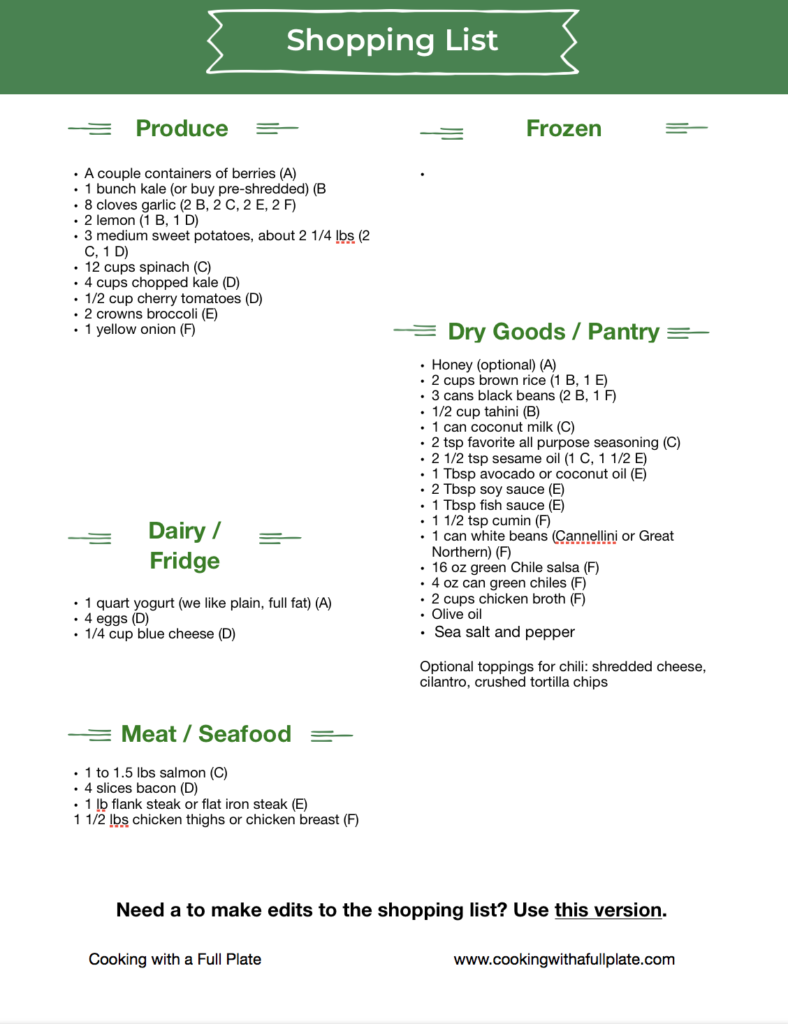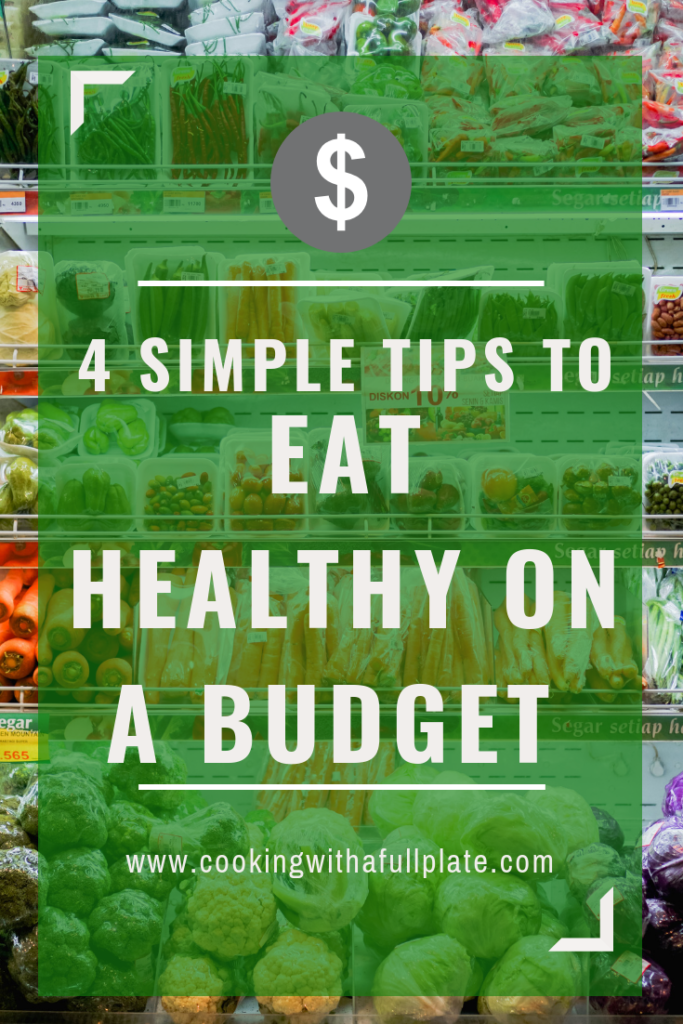I’m sure we’ve all heard the refrain “but it’s so hard to eat healthy on a budget”. And they’re not wrong. Studies show that it can cost more to eat healthfully. But I can assure you that healthy eating on the cheap is possible.
Parents, in particular, will be interested in these insights into healthy eating on the cheap because those extracurricular activities don’t pay for themselves and kids have this “annoying habit of needing to eat”. That said, with the help of careful planning, increased flexibility, and relying on unprocessed ingredients, it is possible to feed your family well on a budget.
Here’s how:
Plan out your week ahead of time
Adulting is so fun, isn’t it? But seriously. If you go to the grocery store with no plan, you have no hope of sticking to a budget or saving money on healthy food. As Shelly Longenecker from Dinner for a Dollar and I shared in this podcast episode “you’re not going to accidentally eat a whole food diet and you’re not going to accidentally eat a whole food diet on a budget”. If you do not yet meal plan each week, this is the most obvious place to start. Here’s how:
Make sure you check your schedule:
Life with kids is ever changing and as you’re juggling soccer practice, ballet recitals, and work meetings, it’s super important that you know what the week looks like ahead of time. Things like bringing a snack to the team, lunchtime birthday parties, and dinners with friends are going to change your needs for the week and it’s imperative that you plan accordingly.
I also like to be realistic about what nights I’m actually going to have time to cook. If we get home at 5:30 from mommy and me, I know that I either need to plan on a make-ahead slow cooker meal or plan on eating out. My goal is always to PLAN for eating out so I’m not surprised by the frequency and cost. This also helps to ensure that I’m not wasting food for a meal I planned that we don’t actually end up eating.
Plan out your meals:
This doesn’t have to be complicated or sexy. So put away the Pinterest app and once you’ve outlined what meals you need food for, start with the basics. Here’s a simple way to organize your weekly meal ideas.
In our family this means:
- Outlining the standard lunch staples that we eat (think: bread, peanut butter, cherry tomatoes, apples, berries, string cheese, etc.)
- Adding in a couple “staple” dinners to keep it simple (think: pasta with tomato sauce and frozen veggies, leftovers from the freezer, or a big salad and grilled cheese)
- Filling in a couple other innovative or fun meals that I’ve been wanting to try. I still keep these really simple for weeknight cooking, but this is where I’ll plan to try or test a new recipe (this week it’s: chicken verde chili and beef and broccoli – both of which will show up on my meal plan for members)
Just a note: I have found through making 100s of meal plans, that it’s better to UNDER plan than OVER. This is why in my meal plans (both for clients and my family) I include one bulk and make-ahead breakfast and lunch for the week along with a MAXIMUM of 4 planned meals.
What do you do the other nights? Honestly, I think most folks use other nights for: planned or unplanned eating out, really simple meals (see above), breakfast for dinner, etc. There’s no need to have something new and exciting every night and, honestly, I’ve found that one of the keys to long term healthy eating is to not put so much pressure on every meal to be the perfect mix of healthy, new, and delicious.
Ok, are you convinced not to over-plan? Now it’s time to…
Make a thorough shopping list
This is important no matter what, but it’s especially critical if you’re shopping with kids. Because who can think clearly with kids hanging on the cart or running to the only glass jar on the shelf. Yikes! I have PTSD just thinking about it.
I like to make my shopping list using this simple template (hit Copy to save an editable version for yourself).
My friend made this cool template for her family that I loved.
My husband shares his running list of “things we need” by using Alexa Voice commands.
Honestly, it doesn’t matter what it looks like as long as your list is thorough and exact. Key things to include are:
– Items you need
– Quantities of each item
– Ideally organized (at least loosely) by the sections of the store so it’s easy to fully shop one section at a time
Here’s what a filled out shopping list from my membership looks like:
Go to the grocery store less
Seriously, the shopping list will be a huge help in this. The truth is, every time you go to the store, you spend more money and time. According to Shelly of Dinner for a Dollar “I would guess if you could bring your food trips to just once a week from 2-3 you’re going to save about $150-$200 per month just by going to the store less”.
What? Talk about high impact activity! I love when doing something LESS can result in MORE.
It also helps to keep your reserves of self-control for more important things. According to the book The Blue Zones Solution, “University of Minnesota professor Kathleen Vohs and her colleagues found that each morning we wake up with only a finite amount of discipline and once we deplete it’s, it’s gone. We can use self-control for exercise, putting up with ornery kids, being nice to our spouse, trudging off to work, or avoiding those delicious calories. But at a certain point, the self-control bank account is empty.”
Be flexible with your choices
I’d love for you to consider whether it’s really SOOOO important to get those honey crisp apples instead of ones that are on sale. Because these can represent a big price difference depending on the sales.
One way that I like to be flexible and save more money is to check out my local stores’ sales ahead of time. This way I don’t have to make decisions at the moment that might not actually work. For example, I will substitute one kind of reddish apple for another but I don’t usually substitute red onions for yellow onions because their flavor is so different. Likewise, I’ll substitute chicken thighs for breasts in a soup or stew but not in a stuffed chicken dish.
Why are those things on sale at the store anyways? Many of them are called “loss leaders” and they’re there to get you in the store. Unless I have “extra time” (ha!!) I don’t often go to a different store to take advantage of these loss leaders. However, I do find that the more flexible I can be (does that sheet pan meal really need roasted cauliflower instead of roasted broccoli?) the more I can jump on the deals at the store I’m already shopping at.
One other way to save money long term is to stock up on your favorite staples when they are on sale. I don’t LOVE storing lots of things, but I will add a couple boxes of Simple Mills crackers to my list if I see them on sale because I know they’ll keep and I can use them as “fillers” for our meals. This makes it worth it to have on hand at a lower price.
Another way I use the “stock up for less” principle is to buy whatever healthy staples I can at Costco. I have a running list of things in my head that are “worth it” to get there, which includes:
– almond flour
– quinoa
– sometimes brown rice but it’s such a big bag
These are such good deals that I’ll go out of my way to Costco when we’re out of them to replenish our stock. Seriously, the almond flour there is about $12.99 for 3 lbs vs. $14.99 for 2 lbs on Amazon. For these things, I’m willing to give up pantry shelf space to save some money. So think about what you use enough of and spend enough on that it might be worth doing the same!
Rely more on real, unprocessed food
It costs money to have someone else do the work for you, which makes sense. Think about all the work it takes to take wheat berries to flour to crackers. This is why I’ll often serve things like apples with cheese instead of crackers. Plus it has the added benefit of packing more nutrition.
Wherever possible, buying things in their whole, real, unprocessed for will be cheaper. For example:
- Whole bananas vs. dried bananas
- Plain yogurt vs. greek yogurt
- Brown rice vs. pre-cooked packaged brown rice
But an important note here: make sure you balance the value of your time with the cost of food. I’m all for making chicken from scratch as much as the next person, but there are times when a rotisserie chicken just cannot be beaten. Don’t sell yourself short and underestimate how much your time is worth. Plus, if you aren’t realistic in your planning and end up eating out, you’re going to spend way more on the meal out (and wasted food) than you would have.
In conclusion: Healthy Eating on the Cheap is Possible with these 4 Simple Tips
It is possible to succeed with healthy eating on the cheap, but it is going to take a little bit of work, flexibility, and planning.
The main keys are to:
- Plan your week ahead of time
- Go to the grocery store less
- Be flexible with your choices
- Rely on more real, unprocessed food
What’s one way that you practice healthy eating on the cheap?
Pin it:
This post contains affiliate links. As an Amazon Associate I earn from qualifying purchases.


